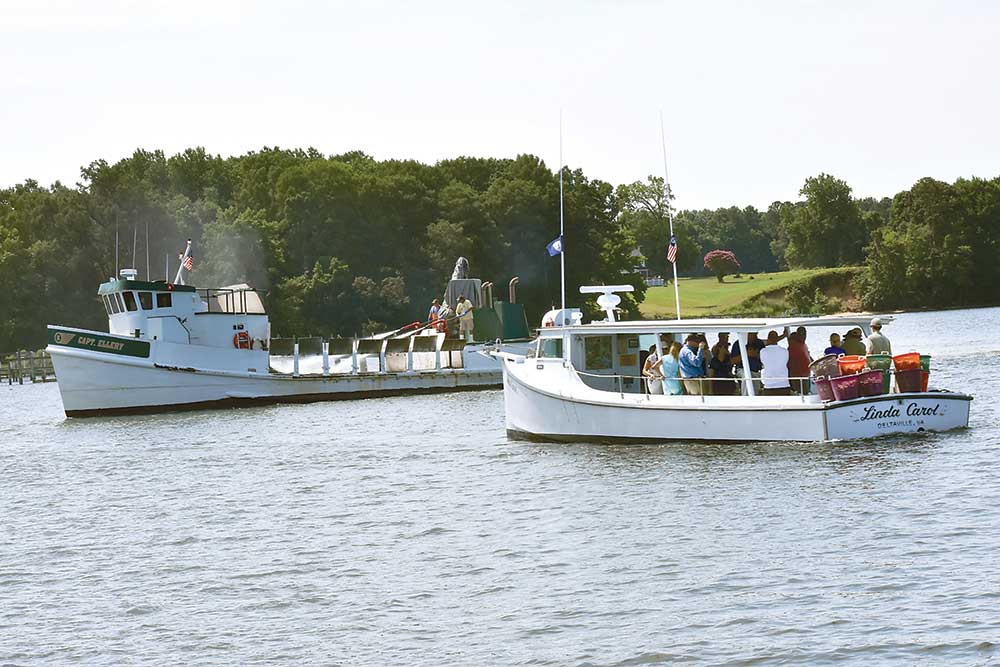
by Larry Chowning –
An oyster restoration project on the Piankatank River on Middlesex County’s southern border is now complete, reported Virginia Gov. Ralph Northam in a recent announcement.
Gov. Northam said that projects on the Piankatank and Great Wicomico rivers, totaling more than 150 acres of oyster habitat combined, are now complete.
“This is one of the largest oyster restoration projects in the entire country,” said Northam.
He stated that Virginia has now fully restored four tributaries which include the Lafayette River, the Eastern branch of the Elizabeth River, Piankatank and the Great Wicomico rivers.
The Piankatank project included planting 500 tons of stone in the river to establish an oyster reef, which is a type of clutch for oyster larvae to attach to and grow. Oyster populations are restored by constructing new reefs and planting young oysters to create new ecosystems.
Over the past two years, the Virginia Marine Resources Commission (VMRC) has deployed more than 50,000 tons of rock and near 100,000 bushels of shell to restore 127 acres of oyster habitat in the Piankatank, along with more than 12,000 tons of rock and 14,000 bushels of shell to restore 24 acres of oyster habitat in the Great Wicomico River.
The partners in this project are State of Virginia, Chesapeake Bay Foundation, the Elizabeth River Project, Lynnhaven River NOW, the National Oceanic and Atmospheric Administration, the Nature Conservancy, U.S. Army Corps of Engineers, Virginia Commonwealth University, the Virginia Institute of Marine Science, W. E. Kellum Seafood in Weems and VMRC.
The Piankatank River is one of the cleanest rivers in Virginia and has a long history of being one of the top “incubator” rivers for growing seed oysters. The only one that is considered better for growing seed is the James River.
Oysters once thrived on the Piankatank and Rappahannock rivers. However, MSX and dermo, two deadly oyster diseases, along with over-harvesting and pollution brought the industry to its knees in the 1980s. Of late, statewide the oyster stock has had a remarkable rebound due to better methods of growing oysters, development of disease resistant oysters, and better management of the resource.
Historically Middlesex County has prospered by having this natural resource right at its doorstep. While the Piankatank is best known for growing seed oysters, the Rappahannock River is one of the best rivers in the world for growing tasty, market size oysters.



